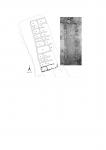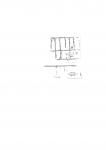Summary (English)
The 2018 Pani Loriga Archeological Mission has been focused on several activities and analyses to increase our knowledge on the site and its surroundings and on the material culture collected during the previous campaigns.
The recovery of the surface survey on Pani Loriga (continuation of 2006-2007 surveys lead by M. Botto, F. Candelato and S. Finocchi) aimed to explore the eastern slope of the hill. Fieldwalkers surveyed several areas close to excavation sectors (Area A, B and C) identifying a number of interesting evidences strictly linked to other buildings previously investigated. In detail, the survey activities highlighted several ruin and collapse contexts pertain to rectangular/squared structures. These buildings show the same plan orientation detected in the nearby Area B: these evidences suggest us a dense settlements of the hill without interruption from the quarters explored during the previous years.
The identification of a wide pedestrian entry contiguously to Area C sector reveals the way to reach the Acropolis from the highest terracing slope of the hill.
The survey in the so-called Area Sacra sector in the eastern side of the hill has highlighted both some prehistoric (pre-nuragic) evidences and a pedestrian passage linked to the site’s natural access consisting of a deep hollow known as Valloncello.
Meanwhile, all the artefacts has been recorded and their description, distribution and spatial position has been digitized in a specific GIS database. Daily drone’s flights have permitted a complete aero-photogrammetric planimetry of the archaeological features visible on Pani Loriga hills that were also photodocumented (some by tridimensional reconstruction) and geolocated.Moreover in the laboratory, the activities has been focused on the study and analysis of the archaeological finds recovered during 2013-2017 campaigns. First, the classification and study of ceramic, glass, lithic and metal artefacts and bones were direct to the understanding and representation of the material culture of the Pani Loriga ancient settlement. A selection of finds has been examined through specific analysis, particularly bio-chemical analysis to identify contents and residues of the vessels. The site of Pani Loriga is involved in fact in international analysis projects focused on both storage and kitchen ware and overall to define the ancient regional landscape and related manufacturing activities.
- Massimo Botto - Istituto di Studi sulle Civiltà Italiche e del Mediterraneo Antico del Consiglio Nazionale delle Ricerche
- Emanuele Madrigali – Universitat Pompeu Fabra, Barcelona
- Livia Tirabassi – Unversiteit Gent, Gent
Director
Team
- Stella Interlando – Università degli Studi di Padova
- Laura Perotti – SISBA, Università di Trieste, Udine e Ca' Foscari di Venezia
- Sara Lancia – Università degli Studi di Sassari – Archaeologist
- Simona Ledda – Fondazione del Cammino Minerario di Santa Barbara
- Sabrina Cisci -Soprintendenza Archeologia, Belle Arti e Paesaggio per la città metropolitana di Cagliari e le province di Oristano e Sud Sardegna
- Damià Ramis – Indipendent Researcher
- Jacopo De Grossi Mazzorin – Università degli Studi di Lecce
- Leila Birolo – Università degli Studi di Napoli "Federico II"
- Leonardo Bison – University of Bristol
- Nicolas Garnier – Laboratoire Nicolas Garnier
- Giuseppe Garbati
- Marco Arizza – CNR, Roma
- Tatiana Pedrazzi - Istituto di Studi sulle Civiltà Italiche e del Mediterraneo Antico del Consiglio Nazionale delle Ricerche
- Manuela Bonadies – Università di Roma "La Sapienza"
- Martina Zinni – Università di Roma "La Sapienza"
- Guilleme Pérez-Jordà – G.I. Arqueobiología, Instituto de Historia, Consejo Superior de Investigaciones Cientificas, Madrid
- Leonor Chocarro – Consejo Superior de Investigaciones Cientificas
- Simone Amici – Università di Roma "La Sapienza"
Research Body
- ISMA CNR, Roma (Italian National Research Council)
Funding Body
- 2. Associazione Culturale Pani Loriga di Santadi - ONLUS
- Cantina di Santadi
- Comune di Santadi (SU)
- UNIPOLSAI Assicurazioni






![Download [PDF]](/excavation/skins/fasti/images/results/download_sml.png)
